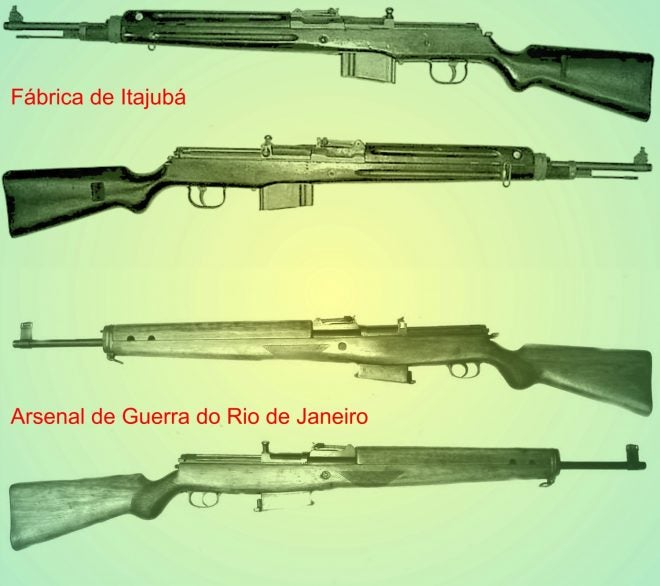World War II, as well known, marked the actual in-combat debut of semi-automatic rifles by the main nations involved, such as the United States (with the .30-06 M1 Garand), the Soviet Union (the 7.62x54Rmm SVT-40), and Germany (the 7.92x57mm G43/K43). The deep influence of the subsequent 7.92x33mm MP43/MP44/StG44 family on the post-war “assault rifle” design concept is equally well recognized. But it was the earlier Gewehr 43 that eventually caught the attention of Brazil as a possible way of locally manufacturing a semi-auto rifle for its armed forces, the Brazilian G43.
Traditionally armed with 7x57mm bolt-action Mauser rifles, Brazilian Army’s FEB – Força Expedicionária Brasileira (Brazilian Expeditionary Force) fought alongside the U.S. 5th Army in the Italian front in WWII using .30-06 M1903 Springfield and M1 Garand rifles, the latter’s semi-auto characteristics certainly catching the eye of everybody involved in combat. With the end of the hostilities in Europe and returning home, the idea of having that kind of weapon as a general issue was strong in the local military minds. For unknown reasons, the Garand (brought home in reasonable numbers) was not the type thought of. Instead, it was decided to go ahead with local production of a Brazilian G43-based semi-auto rifle in .30-06 chambering.

The .30-06 Mq .30 M954 Mauser bolt-action rifle made by Fábrica de Itajubá, the inset showing the receiver markings.
As the .30-06 Springfield cartridge had been adopted as a Brazilian Army standard following WWII, the service’s Fábrica de Itajubá (Itajubá Factory), in Minas Gerais State, started converting locally-made bolt-action Mauser to the new round. Initial models were generally designated Mq .30 M1949 — aka Mosquetão Calibre .30 (7,62mm) Modelo Brasileiro — soon followed by the slightly-modified Mq .30 M954, with a threaded muzzle to receive a grenade launcher.
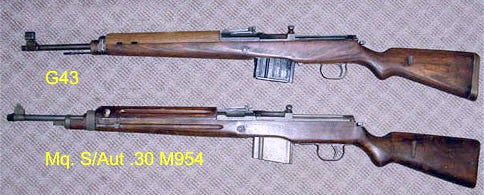
A side-by-side comparative view of the 7.92x57mm German Gewehr 43 and the .30-06 Brazilian Mq. S/Aut .30 M954.
Curiously enough, the entirely different, G43-inspired semi-auto design was closely designated Mq. S/Auto. (from Mosquetão Semi-Automático) .30 M954. Somehow, hard figures on the number of guns built in the mid-1950s (“a few hundred” is a common figure) and detailed specifications of the weapons are difficult to dig out. It is known, however, that the somewhat improved gas system incorporated a push-button cut-off feature for use when firing rifle grenades. As seen in photos, the 20-round detachable box magazine used came from the M1918 BAR. Anyway, the general performance of the rifle left something (a lot?) to be desired, and full series production was never put into practice.
Selective-fire prototypes were reportedly also made, but the extractors usually failed after a few hundred shots fired as a result of the strong vibrations and efforts generated by the full-auto operation. Adequate metallurgical material and processing were not available (lack of funds, though) at the Itajubá Factory at the time, and the Brazilian Army would end up adopting the 7.62x51mm FAL in 1964, which would for long be manufactured in that facility.
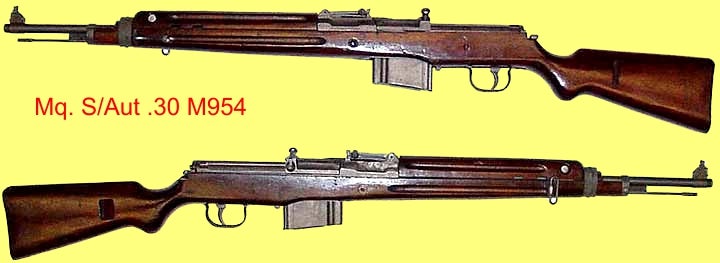
The Itajubá Factory-made G43 clone.
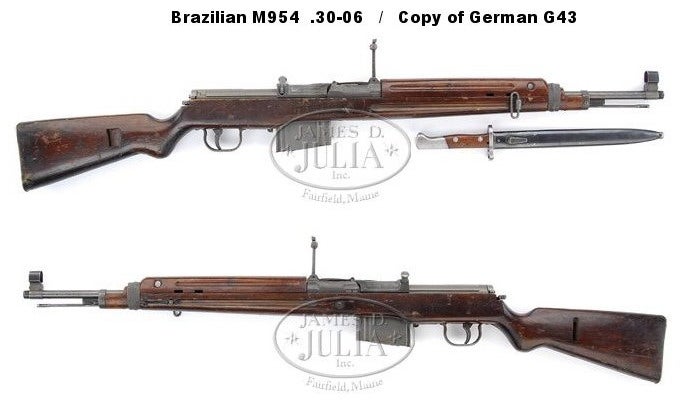
Although extremely rare in Brazil, copies of the Mq. S/Aut .30 M954 legally found their way to the U.S. collectors’ market some years ago. (Image source: James D. Julia Inc.)
Images update: Some extra detailed photos of a Mq. S/Aut. .30 M954 rifle became available shortly after the post was published.They are added below:
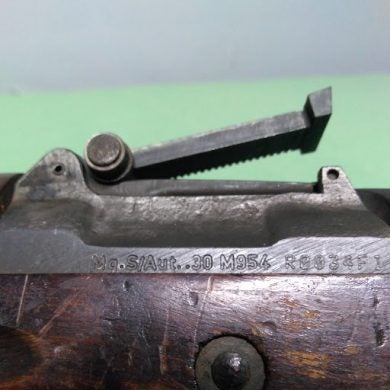


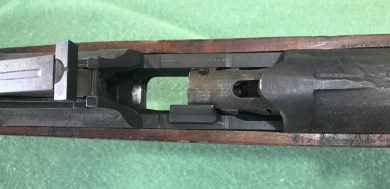
An even rarer Brazilian G43 derivative also emerged in Brazil at about the same time, that is, in the mid-1950s. A side program took place by the Army at its AGR – Arsenal de Guerra do Rio de Janeiro (Rio de Janeiro War Arsenal) as a possible back-up/refinement to the Fábrica de Itajubá efforts. Other details are non-existent, but a sole prototype example is available in photos never published before. Enjoy this TFB exclusive!


Right and left side views of an unmarked .30-06 G43 clone reportedly built by AGR – Arsenal de Guerra do Rio de Janeiro in the mid-1950s.
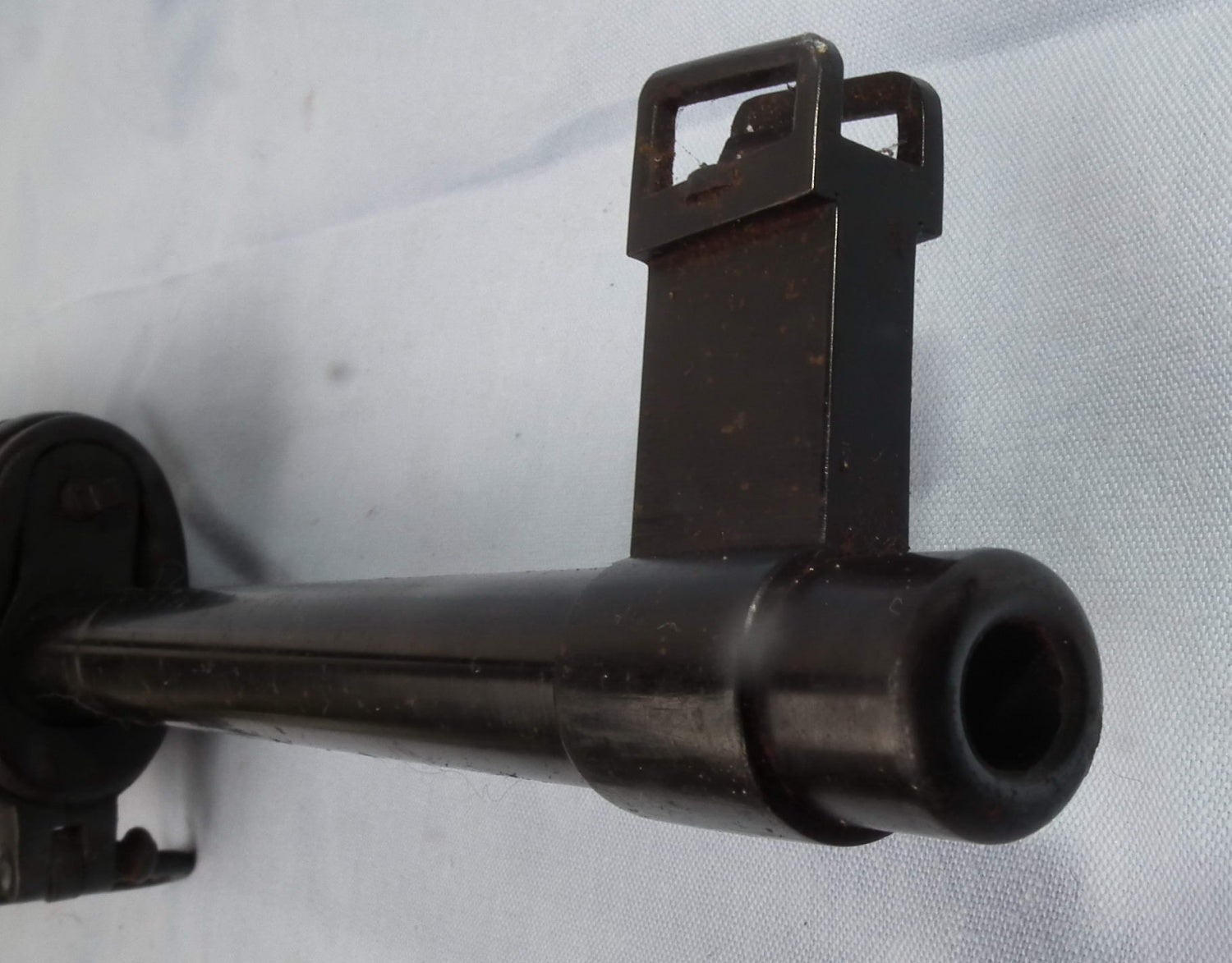
The rare prototype’s side-protected front sight differs from the original Gewehr 43 unit, which was frequently hooded.
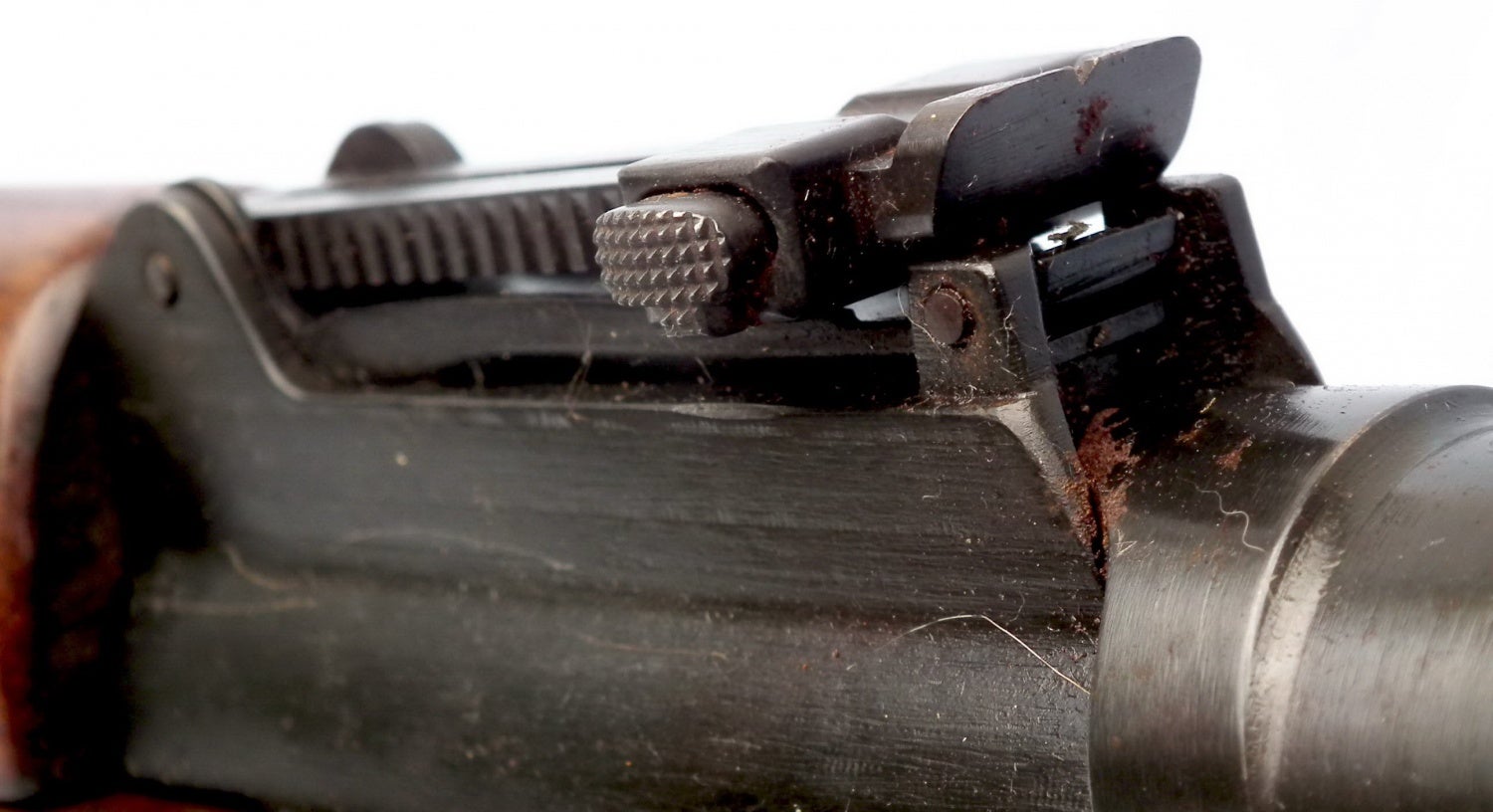
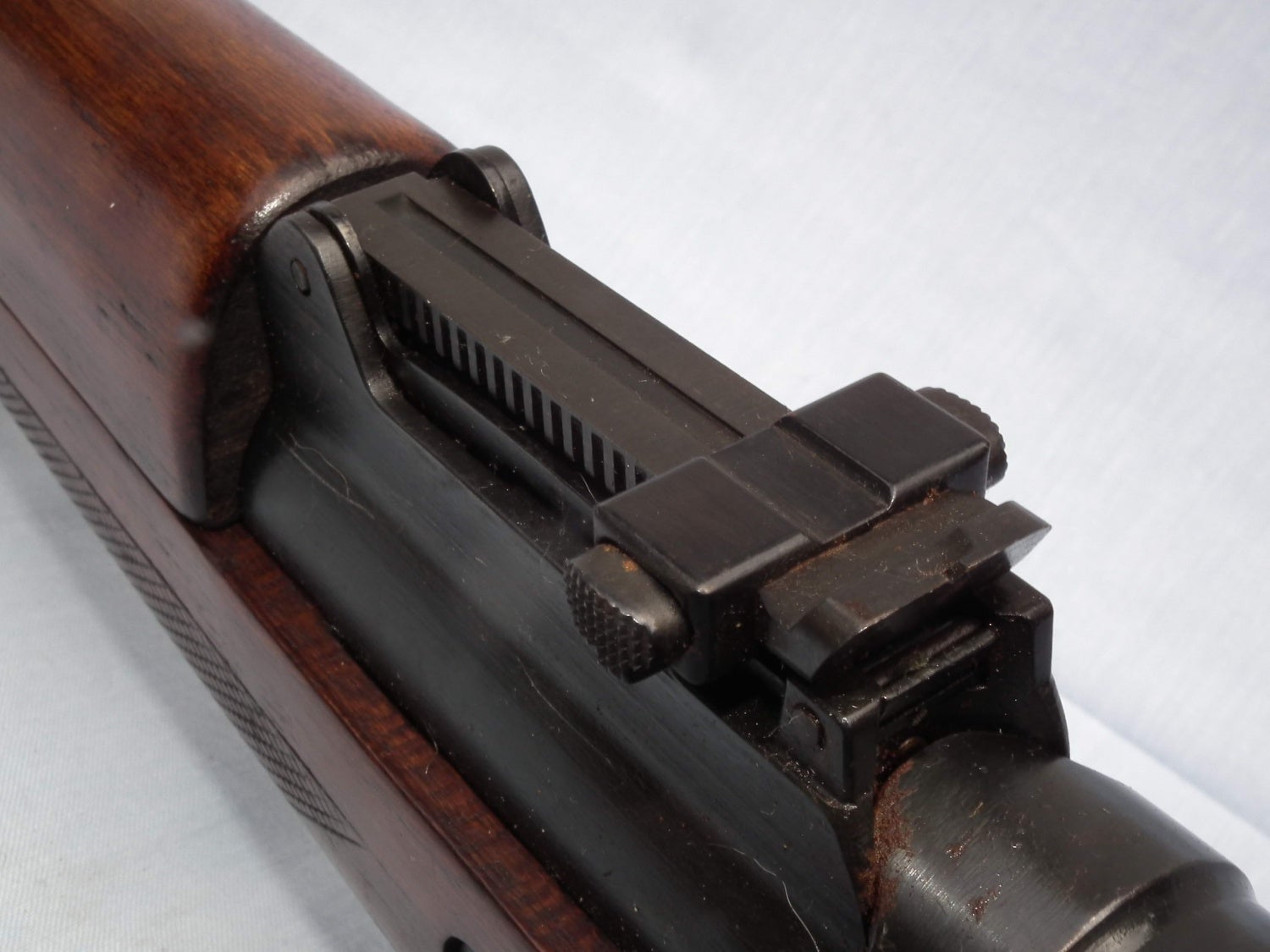
The same gun’s adjustable ramp notch rear sight. It can be noticed that no range adjustment markings are present.
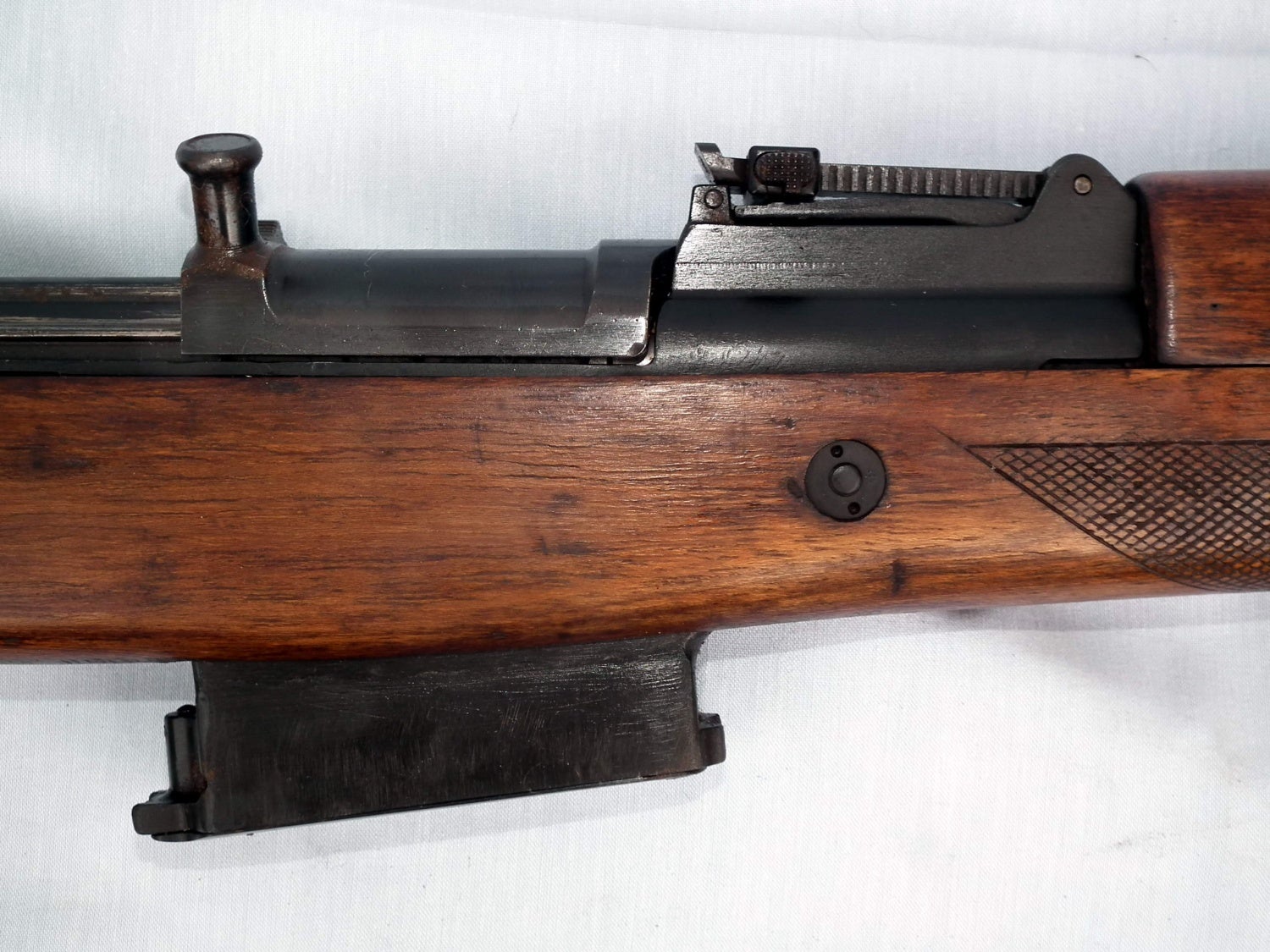
A closer view of the receiver area. Note that the bolt carrier’s almost vertical charging handle is more similar to the one used in the earlier Walther G41(W) than to the G43’s, which was more inclined to the left side.
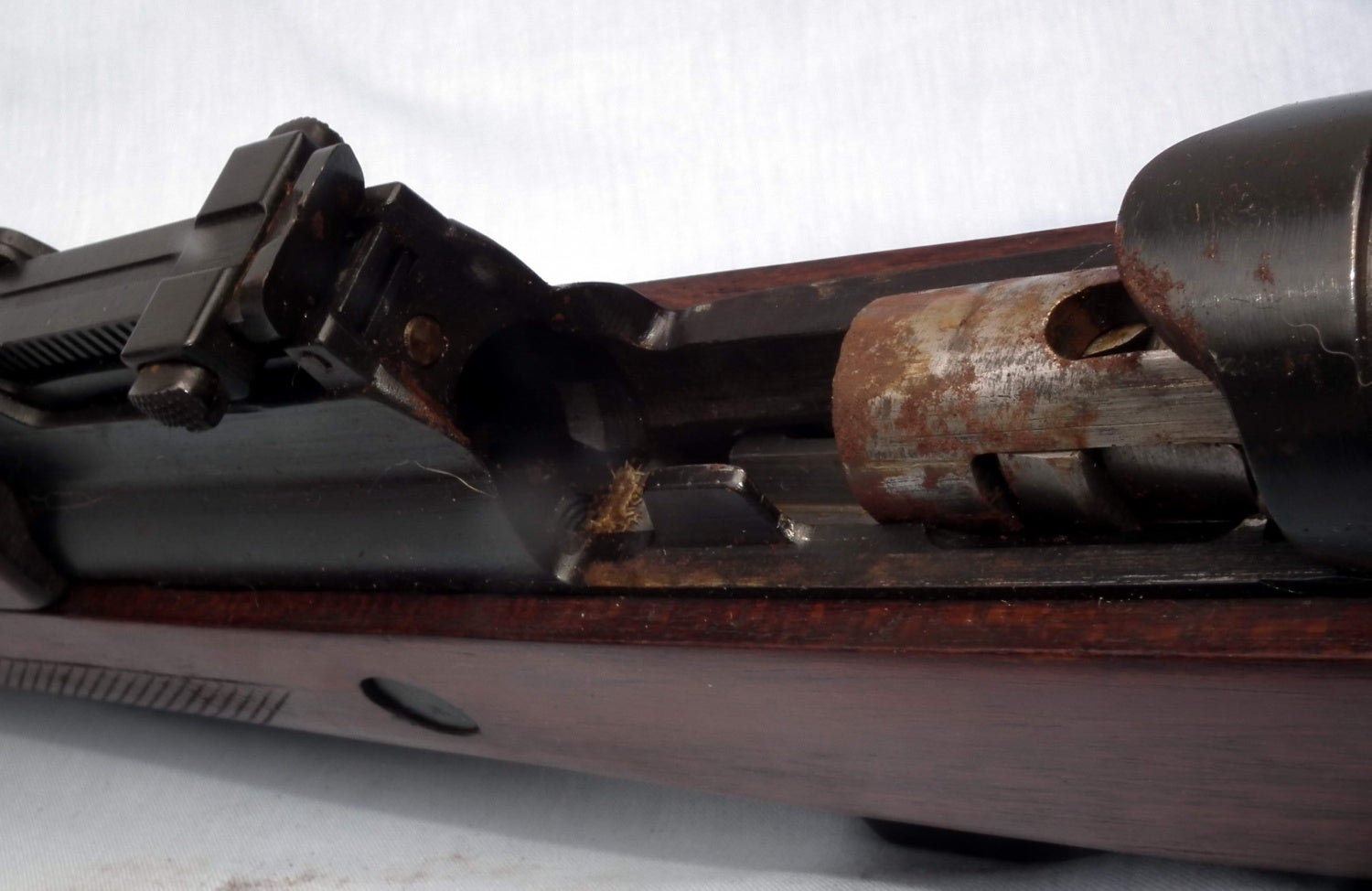
This open chamber view clearly shows the left breech locking lug on the side of the (somewhat rusted) bolt.

The fixed 10-round magazine fitted to the AGR prototype is flat-sided, but the original G43 magazines had vertical reinforcing ribs.
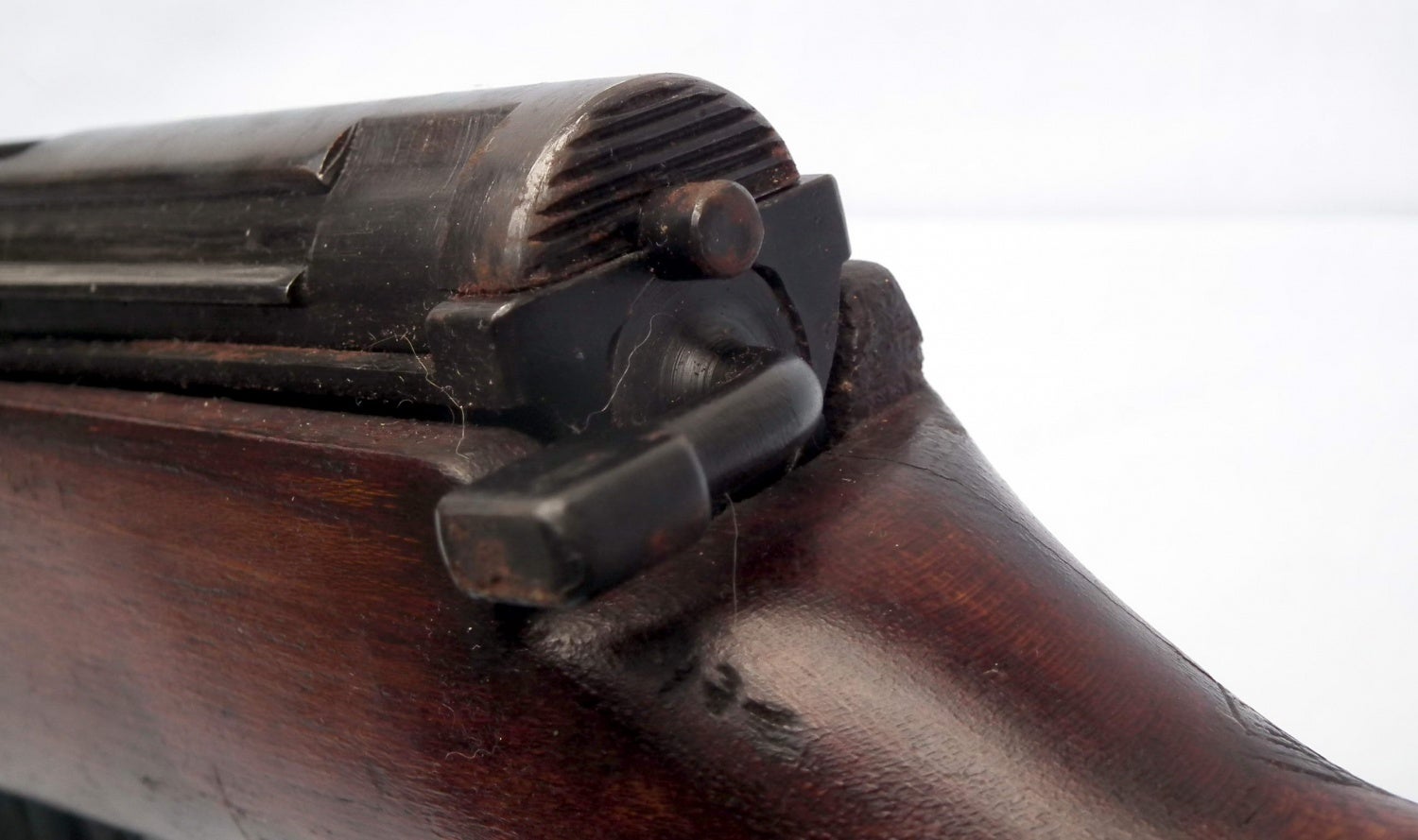
Seen from the rear, the rifle’s bolt housing, and the applied safety lever.
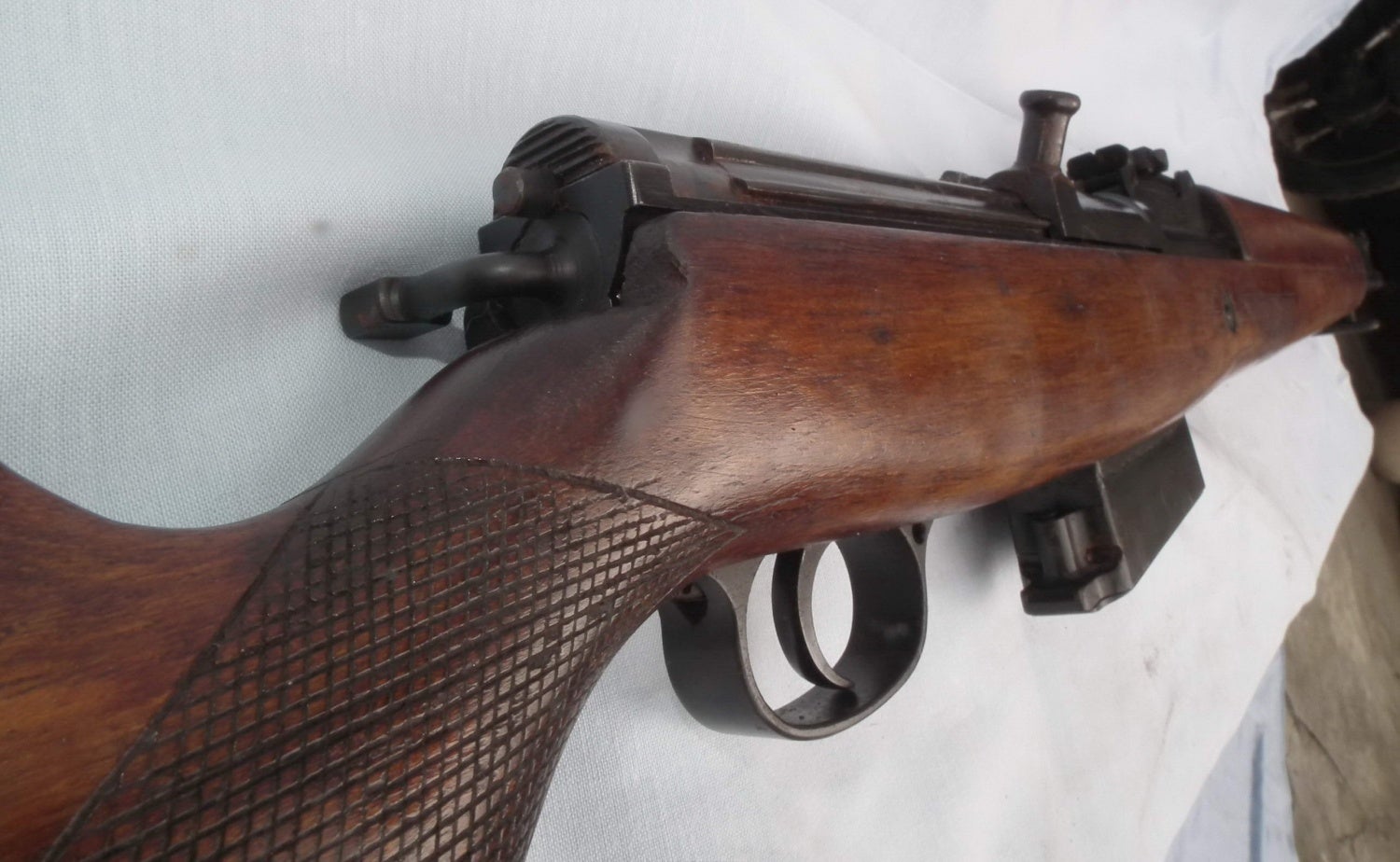
A departing picture of the AGR prototype. Note checkering of the stock grip area.
Higher-res photos available: https://imgur.com/a/zCfNMUU
 Your Privacy Choices
Your Privacy Choices
